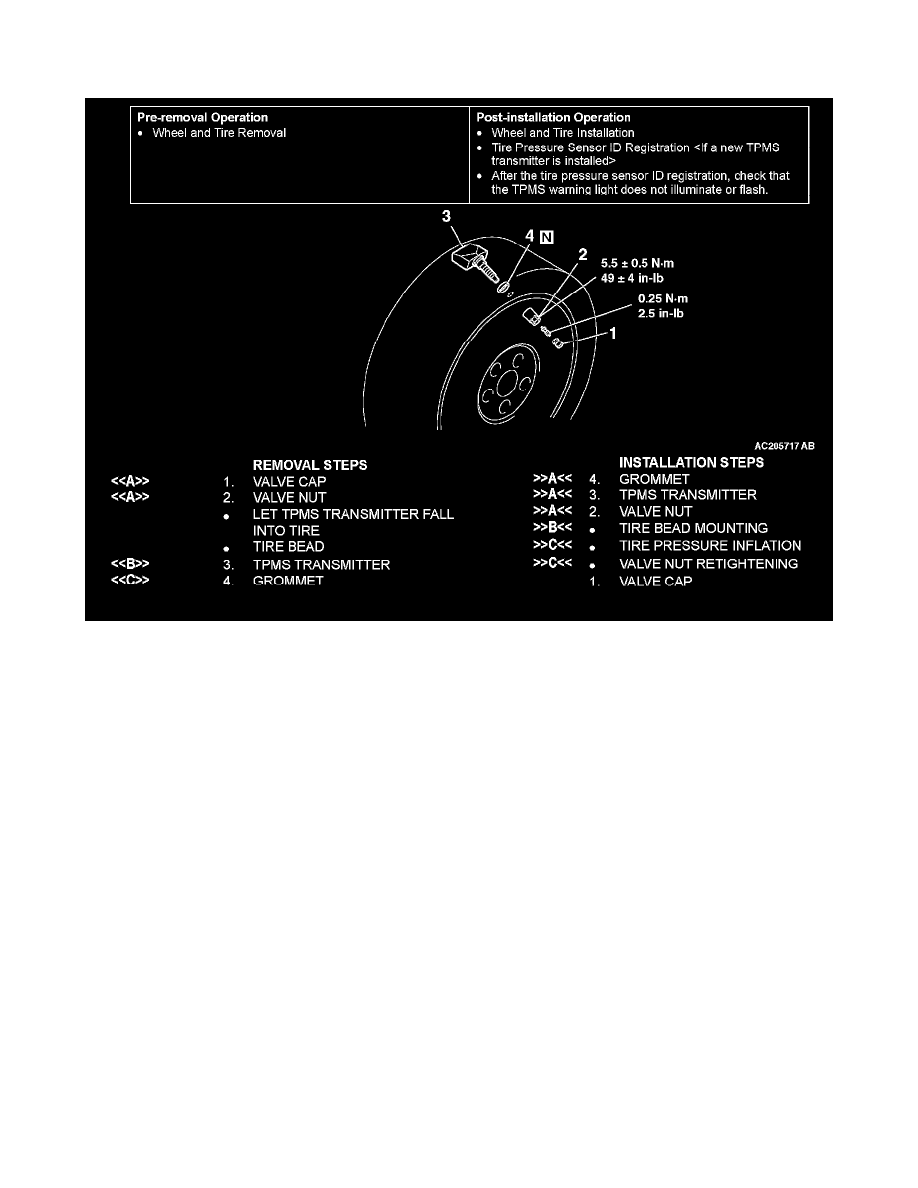Endeavor V6-3.8L SOHC (2004)

Tire Pressure Monitor Receiver / Transponder: Service and Repair
TPMS Transmitter
TPMS TRANSMITTER
REMOVAL AND INSTALLATION
CAUTION:
^
Ensure valve cap is always in place except when adjusting tire pressure.
^
If the valve core and valve cap are replaced, use a genuine replacement part. The valve core is similar to a conventional one, but uses nickel
plating to avoid corrosion.
^
Relieve tire pressure by removing the valve nut rather than by removing the valve core.
^
Replace the valve stem grommet with a new one every five years or when the tire is replaced.
^
If you shake the TPMS transmitter, you can hear a rattle, but this is not a failure. It is normal.
^
Do not drop the TPMS transmitter from height greater than 1 meter (3.3 feet).
^
Do not expose the TPMS transmitter to extraneous magnetic fields.
^
TPMS transmitter should not be stored at temperatures above 80°C (176°F).
^
TPMS transmitter should not be exposed to temperatures above 100°C (212°F).
^
If the TPMS transmitter is replaced, execute "Tire Pressure Sensor ID Registration" on scan tool MB99158"Special Function."
REMOVAL SERVICE POINTS
<<A>> VALVE CAP/VALVE NUT REMOVAL
CAUTION: Ensure valve cap is always in place except when adjusting tire pressure.
1. Remove the valve cap.
2. Rotate tire so that valve stem is in the 6 o'clock position.
3. Use a long-reach 17.2 mm (0.68 inch) socket to unscrew the valve nut a few turns. Slowly push valve stem into tire so that tire pressure is
relieved.
4. Once tire pressure is relieved, remove the valve nut.
<<B>> TPMS TRANSMITTER REMOVAL
